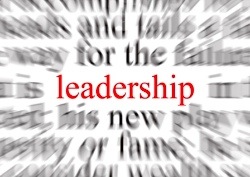Some of you may be wondering what I’m doing here, and where and what exactly here is. No worries. We’ll get to all that soon enough.
 In the meantime I want to talk about leading small.
In the meantime I want to talk about leading small.
Yesterday I ran the Wharf to Wharf, a local 10K race first started in 1973. There are now 15,000 people who run this race every year. Imagine being elbow to elbow for much of the first 2-3 miles and even through the end of the race. The act of running the race became a metaphor for me of what leaders and managers go through every day of their leading and managing lives. Yes, as the kids say, that’s how my mind rolls.
Here’s what went through my racing mind and thumping heart:
- You have to be self-aware of where you are in physical space in relation to those around you. In this case, some runners are walking, some cutting in front of you from left to right, some stop without warning in front of you, some are pushing strollers, etc. That means you have to be smaller in your immediate space while exerting significant control and energy of that space and influencing those around you; you’ve got to be aware of everything around you (see Dan McCarthy’s Blind Spot post). You’ve also got to know who’s in the lead (high performers) and who’s falling behind (low-performers) and where you are in relation. Think about the last time you had an extremely ineffective and raucous business meeting. Did you come in reactive, big and nasty with guns drawn and start knocking people down? Or did you come in, assess the situation, and incrementally and effectively regain control because you were self-aware and in control of you?
- You have to be self-aware of where you are in your emotional space in relation to those around you. In other words, you have to be focused solely in each and every the moment of the race, being small in focal servitude, otherwise distraction can be costly. Just as I stated above about your physical space, being self-aware of your emotional state and those around you is critical to leading yourself and others (think emotional intelligence). How many times have you over-reacted or under-reacted emotionally to a situation at work or at home? Knowing and living emotional self-awareness facilitates better communication and team-building within your organization and beyond. It doesn’t mean just being a nice guy or gal all the time, or a tyrant all the time, but it doesn’t hurt being nice when appropriate, just as it doesn’t hurt being tough when appropriate either.
- You have to keep the 360° focal strength at 100%. And that’s hard to do when you’re running a race, or running a project, or running a business. Stamina is about being economical with your focal strength and decision making — when to cut left, cut right, slow down or speed up — i.e., what to do, what to delegate and what to dump — and is key to long-term physical and mental awareness and effective leadership. But we all get tired and that takes a toll on our own performance. I’m not a long-distance runner, but I do run 4-5 miles three days a week, and although I train for longer races like the Wharf to Wharf, by the time I hit mile 4 yesterday, I found myself slowing down and bumping into a few other runners and had to dig deep into my focal strength reserves. Strong leaders and managers must lead economically with controlled bursts of energy in order to create self-aware endurance and longevity.
- You don’t gain long-term strength advantage if you’re not thinking big as well. When you’ve mastered your physical and emotional leadership states and keep the 360° focal strength at 100%, you can then rise above reactivity and fatigue to make strategic business decisions for your organization and better manage your entire workforce again and again and again. You do want to grow the business and make a positive impact on the world, right? I wanted to finish the race intact and on time, and I did, only to begin training for the next one, and the one after that, and the one after that…
A recent Human Resource Executive article titled What Predicts Executive Success? sums it all up nicely with this paraphrased excerpt:
Conventional thinking holds that a CEO with a hard-charging, take-no-prisoners style will more often positively impact an organization’s bottom line than a “nice guy” would, but there’s been little hard evidence to support such a theory.
However, according to a recent research study from Cornell University’s School of Industrial and Labor Relations that examined the assessments of 72 senior executives from 31 companies:
Self-awareness is the prerequisite for critical leadership behaviors such as earning buy-in, communicating key concepts and building high-performance teams.
So there you have it: Lead small. Think big. And be of self-aware endurance.
I’ll see you all again real soon. Be better and brighter.
“You can make the most of the distance; first you need endurance, first you’ve got to last.” ~Neil Peart
Fantastic site! Your writing is so much better compared to most other bloggers. Thank you for posting when you do, I will be sure to subscribe!
LikeLike
Very exciting to find you here Kevin. Look forward to hearing more from your end on these topics.
I really like the idea of being self-aware in relation to space and valuable others around you. This is a very key concept as we continue to build and foster a culture of leadership and change.
LikeLike
Thank you for stopping by and commenting, Meghan. I appreciate it!
LikeLike
I really like what you write about here. We try and read your blog every day so keep up the good writing!
LikeLike
Good advice and not just for leaders
LikeLike